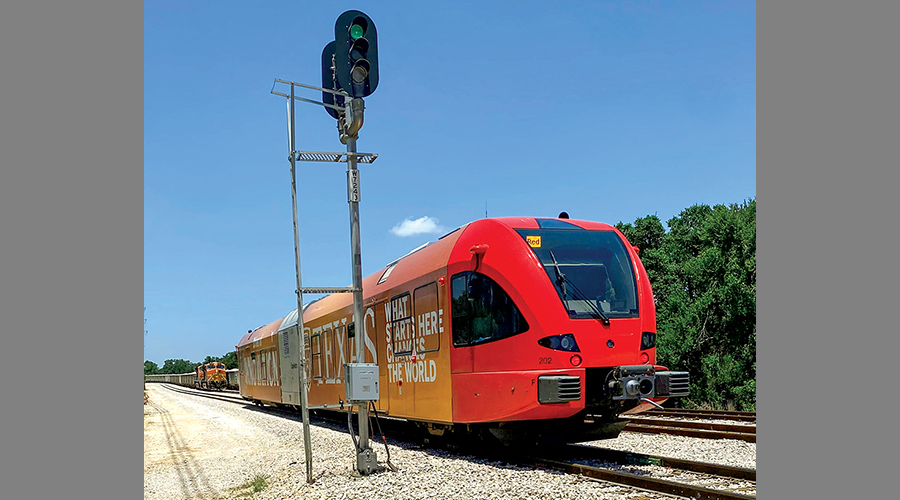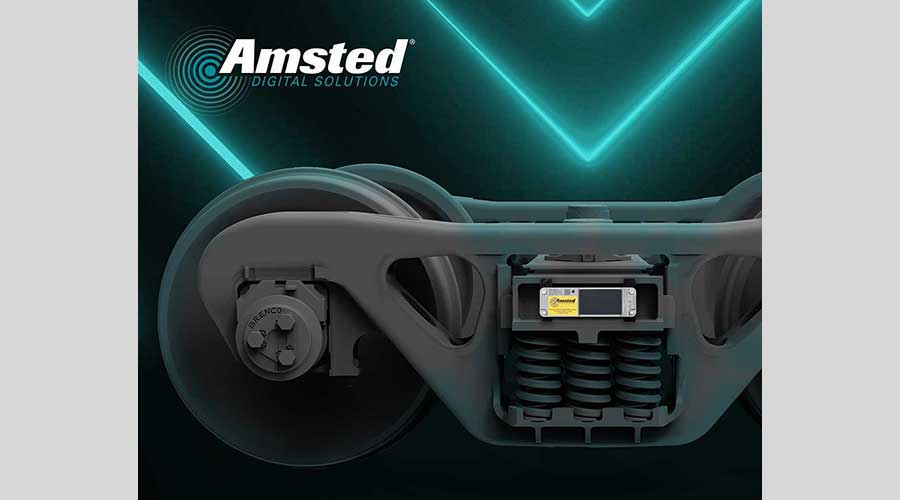Stay updated on news, articles and information for the rail industry
June 2012
Rail News: C&S
Positive train control mandate adds to remote power challenges
— by Julie Sneider, assistant editor
One aspect of the federal positive train control (PTC) mandate requires railroads to install communication and signaling equipment (C&S) in certain dark territory locations, or areas that aren't currently controlled by signals. For railroads with track running through remote areas, a lack of a power supply in some of those locations will add another coat of complexity to the already multifaceted challenge of PTC implementation.
"This issue is one of the big cost drivers — not the major one, but one of the major ones — of PTC implementation," says Dwight Tays, chief of engineering technology at CN. "We are now going to put signaling equipment in dark territory where we have not had anything. So what we're finding is that for every dark territory switch that we go to equip with PTC, we are incurring costs to get power to those locations."
Railroads have a number of options to supply power to remote locations, ranging from burying cable extending from a right of way to an existing power service or nearby utility, to installing alternative power technologies, such as solar systems, wind generators, batteries and gas-powered generators.
Following are examples of how two Class Is — CN and Norfolk Southern Railway — and the Alaska Railroad Corp. (ARRC) are approaching the challenge of finding power sources for equipment in remote locations.
Tays estimates that 25 percent to 30 percent of CN's network is located in remote locations.
"When you do have a territory that is signalized and does go through remote locations, you have to approach the role of your equipment and assistance from a different perspective," he says.
For starters, that means the Class I tries to minimize power consumption "wherever possible" in remote areas, says Tays.
"We have territory that was built a long time ago where we have approached lighting, as an example. Your signals are not illuminated until there's a train on the approach track, and then the signals light up," he says.
When it comes to powering equipment in remote areas, the Class I's first preference is to install its own power cable and/or fiber optic communications cable to tap into an existing CN power source or into a public utility's source if one is nearby. CN has employed that approach for communications over most of its core mainline.
'Hit Or Miss' Alternatives
When that approach isn't practical or economical, the railroad turns to primary battery cells for power generation. As for alternatives such as solar power, the railroad's experience has been "hit or miss" because much of its remote territory is farther north where there isn't always bright sunlight, Tays says.
NS and ARRC also prefer commercial power feeds wherever possible. For NS, that method works in a majority of its remote areas requiring power, says Ray Rumsey, assistant vice president of C&S. Wherever hooking up to an existing power feed or commercial source is not feasible, NS pursues alternatives such as solar power. The Class I currently has 83 locations on its system where it relies on solar panels to supply power to communication systems.
"What we've found is that solar generally works very well," Rumsey says.
When the sun doesn't shine long enough to charge a battery system associated with the solar panels, a supplemental power source is used. In the past, that source typically was portable, gas-powered generators.
But trucking the units to a site proved to be "costly and a lot of trouble when you had to get in a fueling rotation," especially when solar power was unavailable for days at a time, Rumsey says. "So, in the last few years, we've developed a couple of alternative generator sources, one of which is wind turbines."
On some solar systems, small propellers are installed on masts so that when the wind blows, the spinning propeller generates a charge to the battery system.
"And we've found that's a reasonable, low cost add-on to keep the batteries charged up," Rumsey says.
More recently, the railroad has installed permanent generators fueled by propane as a backup power source in some locations, he says.
A Natural Combination
Meanwhile, ARRC uses a combination of solar panels and wind generators at remote locations to charge battery installations, says Eileen Reilly, vice president of information, technology and communications. For ARRC, the phrase "remote location" applies to a majority of its 465-mile network: Only about 60 to 70 miles of track have access to commercial power or a utility service.
In locations where neither sun nor wind alone is enough to keep battery plants charged, portable generators are used. In some cases, the railroad has begun installing two generators at one site. Also, ARRC relies on a network management system to monitor power needs "so that we know if we're getting low on power before we have to stop a train and run it through a restricted speed area," says Reilly.
The PTC rule requiring communication and signaling equipment in dark territory means ARRC will need to install switch monitors on nearly 120 switches, most of which will require an alternative power source, such as solar or wind. Supplying power to those remote locations will cost about $25 million, Reilly estimates. This summer, ARRC plans to roll out a test corridor in preparation for PTC implementation.
"We've developed what our standard dark territory switch is going to look like with the power system, and we have four of them being installed this summer to see how the power generation works, how the communications are working and how it affects the train," says Reilly. "Once we're comfortable with the equipment, we'll start our construction plans for the rest of our switch locations."


 Class Is Think Long-Term Intermodal Growth Despite Short-Term Turmoil
Class Is Think Long-Term Intermodal Growth Despite Short-Term Turmoil
 Introducing The Rising Stars Of 2025
Introducing The Rising Stars Of 2025
 2025 C&S Spending Report
2025 C&S Spending Report
 BNSF Forms Team Focused On Growing Single Carloads
BNSF Forms Team Focused On Growing Single Carloads
 railPrime
railPrime






